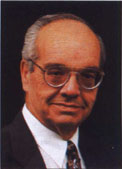All Issues
Strategic planning enters new phase
Publication Information
California Agriculture 53(1):2-2.
Published January 01, 1999
PDF | Citation | Permissions
Full text
During the last 4 years, members of the Division have been engaged in a far-reaching effort to examine mission, priorities, goals and aspirations. This strategic planning effort began with the PPACs (program priority advisory committees), involved the OSTs (organizational strategy teams), solicited input from an extensive group of stakeholders—both external and internal—and currently is focused on the efforts of action teams, focus groups and working units. These teams have been given the task of addressing scores of action items that emerged from our earlier divisionwide efforts, action items addressing issues ranging from Division structure to reward systems.
One of the more visible groups in this process has been the Transition Team (TnT) which was charged with designing and implementing a mission-based structure for DANR. The charge resulted from widespread input indicating that our structure should enhance our ability to address issues where they arise in a fashion that is consistent statewide; encourage interaction and cooperation among all units of the Division and outside agencies, and provide a focal point for individuals, industry and government to communicate with us and support our efforts.
Today we have come a long way toward those goals, culminating in the publication of the “Blueprint for Achieving a Mission-Based DANR Organizational Structure.” Our underlying rationale has been to remain decentralized administratively, but to instill consistency and coordination in our programs.
Key features of the new structure are:
- ■
Statewide programmatic leadership (including a new Assistant Vice President-Programs, three Regional Directors providing administrative leadership, and four new Program Leaders in the areas of agricultural policy and pest management, agricultural productivity, human resources and natural resources);
- ■
Expanded and upgraded workgroups, which serve as the backbone of Division efforts to both develop and implement high priority research and extension goals at the grass roots;
- ■
Coordinated fiscal decision-making keyed to program priorities, and
- ■
A redefinition of the roles of Vice President and Associate Vice President.
Adopting the “chancellor-provost” model used at many university campuses, the role of the Vice President is now defined to focus on external relations, development of support and representation of the Division in the broader University community. The Associate Vice President will focus on internal management of the Division.
Decisions regarding the allocation of resources within the Division will be driven by programs and developed through a broad participatory process involving Program Leaders and the PPACs. While ultimate budget authority rests with the Vice President and the Chancellors, budget proposals and proposals for academic positions will originate at the grassroots, from workgroups, counties and campus departments.
Under the new structure, workgroups will have access to a designated pool of funds, initially $1 million or more, for conducting programs and supporting their own operations. By offering this seed money for research and extension activities, the new structure reinforces accountability of AES faculty, and CE specialists and advisors, to the statewide mission.
The workgroup funding pool has been generated from the DANR competitive grants program, SCAR (Statewide Critical Applied Research AES funds) money, and temporary CE funds. Based on proposals from workgroups and would-be workgroups, Program Leaders will recommend priorities for funding to the Assistant Vice President — Programs. This seed money will create an incentive for statewide cooperation among county and campus faculty. Deans and Directors will have an incentive to follow Program Leader recommendations because it will allow them to leverage their funds more effectively.
In the next steps in this process we will be hiring the Assistant Vice President-Programs. Advertising and recruitment closed February 5. Recruitment for the Program Leader and Regional Director positions will begin in February.
Once the new program leadership team is in place, we will launch the workgroup process, and create a means for evaluating the new organizational structure. As we reinvent the workgroup process, we will need to work out many operational details. For instance:
- ■
What should be the criteria for workgroup establishment?
- ■
What should be the operating guidelines for work groups?
- ■
What process will be used for distributing workgroup funds and other program funds?
As we implement the new Division structure, it is important that we remember that our people and our programs - not only our structure - will define our success. Widespread participation in the strategic planning process has allowed us to redefine who we are and how we will function, but achieving our mission will require continued concerted effort by all members of the Division. The charge to the new Executive and Program Councils will emphasize their responsibility to promote effective partnerships in workgroups. Through these partnerships we can renew our ability to generate and deliver knowledge to address critical issues in agricultural, human and natural resources.
Complete “Blueprint” documents are accessible on the web by logging on at http://danr.ucop.edu and clicking the “implementation” menu item.





